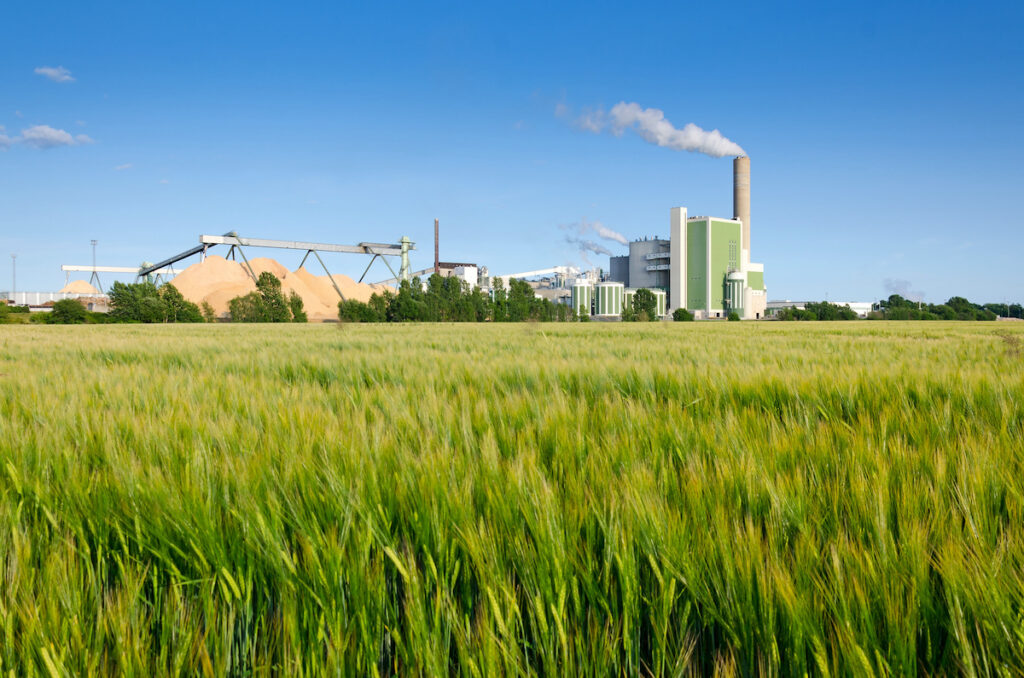
How to Reduce VOCs with AWP & OGI for TAC Section 115 Revisions
December 12, 2023
By: Kaleb Meihls & Michael Kupper
Chapter 30 of the Texas Administrative Code Section 115 (30 TAC §115) Amendment Background
Various equipment at natural gas processing plants, gathering and boosting stations and natural gas and crude production well sites within the Dallas-Fort Worth (DFW) and Houston-Galveston-Brazoria (HGB) ozone nonattainment are subject to updated regulations outlined in Chapter 115 of the Texas Administrative Code (TAC), beginning January 1, 2023. This rulemaking has been revised to address high levels of volatile organic compound (VOC) emissions and site failures to submit emission source categories in the oil and natural gas control techniques guidelines (CTG). This rule mandates any components with 1% VOC on them to be monitored, substantially increasing the amount surveyed from the standard 10% VOC.
If a leak or defect is found, this ruling outlines the increased monitoring, repair completion time and extension requests. 30 TAC Section 115 allows for the implementation of the Alternative Work Practice (AWP) within LDAR programs at natural gas processing plants, replacing the stringent nature of Method 21 with faster, easier, and more efficient technologies.
Method 21 vs. AWP
The benefits of OGI include a much larger number of screened components in a standard work day than Method 21, better and more accurate visibility of leaks, and a higher ability to survey hard-to-reach components all within a faster and more long-term cost-efficient manner. With an M21 program, the typical amount of components surveyed/day is around 500. For AWP/OGI, the typical amount of components surveyed/day is 10,000. This results in substantially fewer inspections, and subsequently, labor days.
| Factors | Conventional Method 21 | Alternative Work Practice |
| Equipment | Hand-held FID monitors to detect VOC ppm levels | OGI to detect visible image of VOC leaks |
| Weather Limits | High rain, wind, humidity, and extreme cold | Rain, fog, wind & extreme cold |
| Accessibility | Maximum 3 meters with probe extension | Maximum > 30 meters with lens |
| Accuracy | High instrument accuracy but prone to operator errors and leak locating errors* | Very high accuracy, exact leak source visible; lower accuracy at concentration <1,500 ppm |
| Inaccessible Components | Not detectable; rare to find leaks from unregulated components | Leaks from insulated, buried, unregulated components detectable |
| Frequency (Method 21 Program vs. AWP Program) | Valves (Monthly > Quarterly); Connectors; Pumps (Monthly); Others vary based on AVO results | Bi-monthly (OGI) or semi-quarterly, depending on leak definition; Annual M21 |
M21 Program Under 30 TAC 115 – Gas Plants
|
AWP (Alternative Work Practice) Program Under 30 TAC 115 – Gas Plants
|
M21 Program Under 30 TAC 115 – Boosting and Compression
|
OGI Program Under 30 TAC 115 – Boosting and Compression
|
M21 Program Under 30 TAC 115 – Well Sites
|
OGI Program Under 30 TAC 115 – Well Sites
|
Background and Equipment Summary
Pollutant emissions can occur from various processes and points throughout natural gas and oil industry operations. Owners and operators will have to oversee many monitoring and inspection changes varying by the form of equipment. Plus, they will have to conduct weekly audio, visual, and olfactory inspections on equipment that could result in air emissions.
The concentration of the VOCs will be determined at least one meter upward of the monitored component and Method 21 will be used to determine the background. Emission leaks are measured by VOC concentrations of equal or greater to 500 parts per million by volume (ppmv) or a leak that’s found with an OGI camera. Defects that could result in air emissions include visible cracks, holes, or gaps in piping; loose connections; liquid leaks; or broken or missing cover devices. Failure to repair defects within the specified inspection period will stop production from a process unit or part of a unit for less than 24 hours or for a shorter period of time than would be required to clear the process unit or part of the unit and start up the unit.
Widespread Impacts of Revisions
The effects of this revision will span through the regulated community, public, and agency programs. Owners and operators of affected sources in the areas are required to comply with monitoring, testing, inspection and recordkeeping provisions as well as install control equipment, as needed, to meet emission requirements. The allowance of AWP and Optical Gas Imaging provides an opportunity for oil and gas companies to utilize more efficient, faster, and more cost-effective LDAR methods overall, reducing VOC emissions. This will result in better public health and an increase in good reputation for being an upright steward of the community in which you operate.
What’s Next and How Montrose Can Help
As the largest provider of OGI services in North America and with AWP experts on staff, Montrose can help reduce your emissions and keep your product in the pipeline all while increasing efficiency within your LDAR program. Montrose’s leak detection and repair (LDAR) team has decades of experience with quality, in-depth leak surveys, measurement, consulting, and data management. Montrose is a global leader in both understanding OGI technology and the value it brings to LDAR programs. Along with being experts in this field, Montrose is continually seeking out the best solutions with a technology driven focus.
Our experts can help find the most cost and time-efficient solutions and technologies to adhere to this added amendment. Regardless of the size or specialty of the facility, Montrose is front and center on keeping you in compliance or implementing an LDAR program to bring you back to compliance with state and federal regulations.
Reach out to see where we can be of value to your program.
 Kaleb Meihls – Business Development Manager, Montrose Environmental
Kaleb Meihls – Business Development Manager, Montrose Environmental
Kaleb Meihls is a business development manager for Montrose Environmental, specializing in LDAR compliance and OGI. He has 14 years of experience in the environmental industry with various positions, including field operations manager, project manager, account executive, and director of business development. This diverse portfolio has contributed to his vast understanding of the environmental services industry.
 Michael Kupper – Director of Operations, Montrose Environmental, U.S. OGI
Michael Kupper – Director of Operations, Montrose Environmental, U.S. OGI
Michael is the Director of Operations for Montrose’s US, OGI (optical gas imaging) division. He manages operations performed by a team of over 30 technicians, project coordinators, field project managers and QMS coordinators. Michael has managed and conducted projects for optical gas imaging inspections utilizing a FLIR camera, Tagging and Inventory, Method 21 Inspections, Tank Maintenance, Tank Seal Inspections and Management of Change, as well as Visible Emission Opacity, HRVOC Appendix P inspection, Steam Trap identification and testing, Flare sampling, P&ID walk downs, Highlighting P&ID’s for clients and understanding flow diagrams. He has extensive fugitive emission project management experience including data QA/QC and is an expert in the analysis and interpretation of fugitive emission data.

